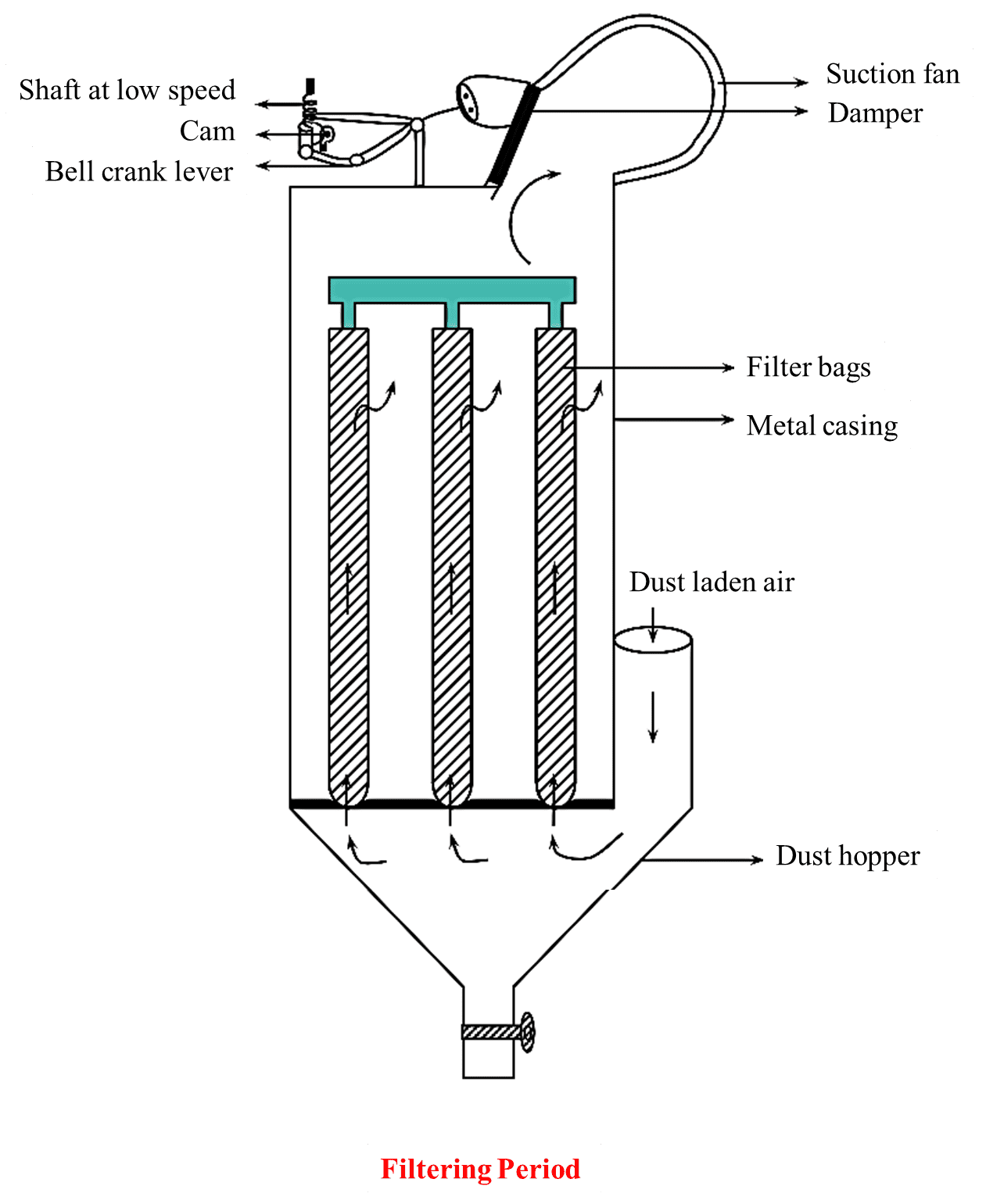

Figure 1: Bag Filter.
Bag Filter equipment is not meant for actual size separation process. Instead, it is used as an auxiliary equipment with cyclone separator or air separator for the separation of fines and dust particles.
Working Principle of Bag Filter
Air-containing fines or dust particles obtained from the milled powder is forcefully introduced into the bag filters. These filters are made up of cotton or wool fabric. Air is introduced under the influence of suction applied on the opposite side of the feed inlet. This enables in the separation of particles. The particles stick to the walls of the bags. Air supply is cut off and the filters are shaken vigorously at high speed. As a result, dust particles adhering to the walls of the filters fall off and are collected from the conical base into a hopper.
Construction of Bag Filter
Bag filters consist of a number of cylindrical bags made up of cotton or wool fabric. These bags are suspended in a sheet of metal container which is tapered at the base. A hopper is placed by the side of the sheet metal container in continuation with the conical base of the container. On the top of the unit, a suction fan is present to maintain a pressure less than the atmospheric pressure. A bell crank lever arrangement is present which consists of a shaft operated by means of a cam. The cam presses the bell crank lever back and forth which in turn changes the position of the damper, which controls the motion of the bell crank lever. Hence, it aids in controlling two steps; filtering and shaking. A suction fan is present beside the damper. A hopper is present at the bottom of the filter to collect the dust particles.
Working of Bag Filter
The working of the bag filters involves the following two steps.
Filtering :
During this stage, air containing the dust particles is introduced into the bag filter through a hopper placed at the side of the sheet metal container. The air ascends into the filter bags under the influence of suction created by means of a suction fan present on top of the bag filters. This leads to reduction in pressure. The suction fan maintains the entire unit at a pressure lower than the atmospheric pressure. As the air laden with dust particles ascend dust particles remain inside the filter bags and the air passes upwards towards the top portion of the equipment. Due to the presence of air inside the bags, they remain completely stretched (taut) during the filtering stage. Drilling this period, the shaft with a cam is rotated at a very low speed. The cam does not press the bell crank lever. Due to this, the damper remains in place so that the filter bag comes in contact with the suction. As the feed inlet is closed, there is no contact between the filter bags and the atmosphere.
Shaking :
After few minutes, the shaft is rotated at a very high speed. The cam attached to the shaft presses the bell crank lever. Due to this, the damper changes its position and thus vacuum is cut off as there is no contact between the filter bags and suction. The feed inlet opens and the filter bags come in contact with the atmosphere. When dust laden air (considering the above condition) is introduced into the bag filters, it results in violent jerking of the bags. The dust panicles adhering to the walls of the filter bags fall into the conical base and are collected into a hopper (or chute) at regular intervals of time.
Advantages of Bag Filter
- Fines generated during milling operation can be removed by bag filters, when other methods of separation cannot be employed.
- The process is completely automatic, does not require manual labour.
- The equipment can also be designed to promote very large filtering surface per unit floor space.
Applications of Bag Filter
- Bag filters are used in association with other size separation equipment such as cyclone separator, air separator in order to remove dust or fines.
- It can also be attached to a fluid energy mill discharge for the removal of fines.
- Used to remove dust.
Example: Household vacuum cleaner works on the same principle.